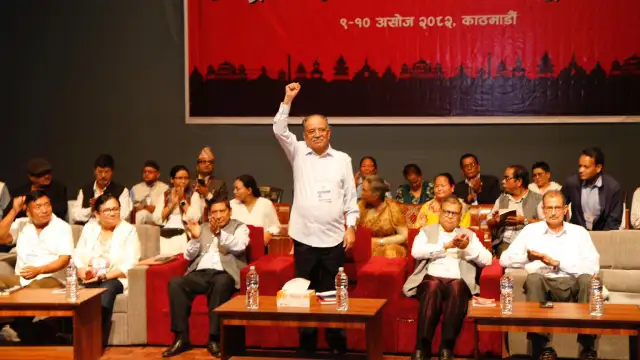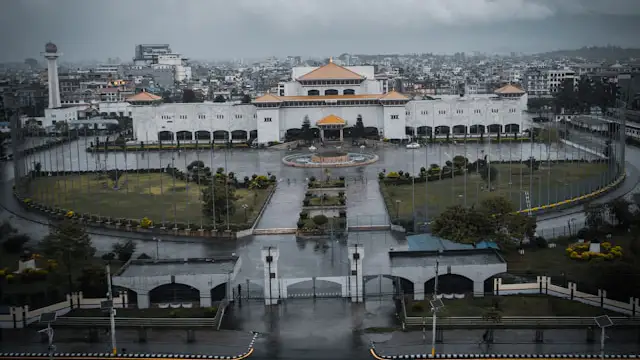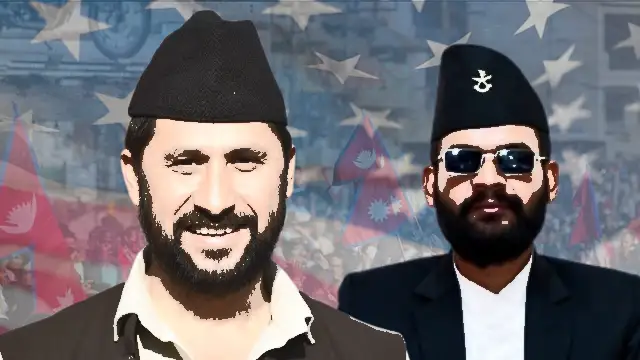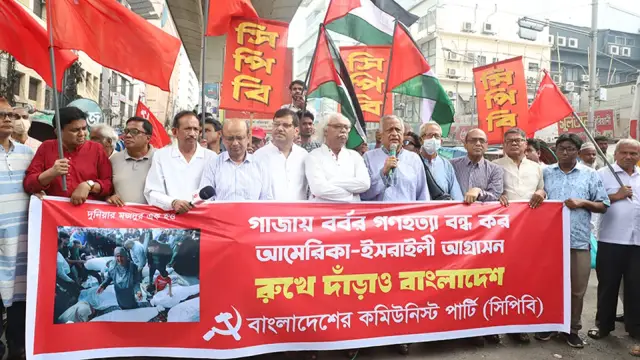The smoke had barely cleared from Kathmandu’s streets when the Communist Party of Nepal (Maoist-Centre) [CPN (Maoist-Centre)] launched an extraordinary experiment in political self-correction. The CPN (Maoist-Centre) organised its central committee’s seventh plenary session from September 16th to 26th. This CPN (Maoist-Centre) meeting has taken place after the youth uprising, branded “Gen-Z movement”, which shook the Himalayan nation between September 8th and 13th.
The CPN (Maoist-Centre) response to September’s youth protests has taken an unexpected direction.
The CPN (Maoist-Centre) central committee’s meeting aimed to review the party’s internal functions and take concrete steps to reform its functioning. The CPN (Maoist-Centre) plenary session signals something remarkable for South Asia—a political party choosing reform over confrontation when faced with popular revolt.
CPN (Maoist-Centre) meeting addresses crisis
The CPN (Maoist-Centre) central committee’s plenary session meeting has been convened as the immediate wave of protests subsided.
Party leadership, headed by Pushpa Kamal Dahal ‘Prachanda’, announced several organisational changes intended to address protester concerns.
Gen-Z protesters succeeded in removing CPN (Unified Marxist-Leninist) [CPN (UML)] leader KP Sharma Oli‘s coalition government through sustained demonstrations.
The protests, which started over Mr Oli’s government imposing a ban on some American social media platforms, turned violent after security forces fired upon protesters and killed over 20 youths.
The violent protests targeted both ruling and opposition parties, citing grievances over nepotism, corruption, and unemployment.
Following Mr Oli’s resignation, an interim government under former Supreme Court judge Sushila Karki has assumed power.
Ms Karki’s administration has pledged to investigate allegations of corruption and nepotism against politicians across the political spectrum.
Critics attributed the demonstrations to various external influences.
Some suggested CIA involvement, while others pointed to India’s political establishment.
These claims remain unverified, though CPN (Maoist-Centre) officials acknowledge that domestic grievances and potential foreign interference played roles.
The CPN (Maoist-Centre) approach to the Gen-Z protests has been different from other parties.
During the protests’ peak on September 11th, Mr Prachanda issued a statement expressing solidarity with demonstrators and committing to self-criticism.
This response differed from typical political reactions to mass unrest. Taking ahead the leader’s initiative, the CPN (Maoist-Centre) central committee meeting focused on reforming the party’s work.
Structural changes emerge from CPN (Maoist-Centre) meeting
The party announced five specific measures following their internal discussions.
Leadership committed to transforming the central committee under Prachanda into a Secretariat and Organising Committee, with a party convention scheduled for Mangsir (the eighth Nepali month—mid-November to mid-December).
The CPN (Maoist-Centre) announced that a commission will investigate the wealth of party leaders and cadres.
This represents a departure from standard political practice in Nepal, where such investigations typically originate from external sources.
The CPN (Maoist-Centre) meeting established procedures to address nepotism and policies governing internal culture, working methods, and movement building.
These measures directly correspond to issues raised by Gen-Z protesters.
Party committees will include mandatory Gen-Z representation.
Information technology received designation as a central focus of party operations, reflecting recognition of digital communication’s importance in contemporary politics.
Strategic calculations behind measures
Matrika Prasad Yadav, CPN (Maoist-Centre) deputy general secretary, outlined the party’s perspective in an interview with the East Post.
“Our party had been leading the movement on these issues long before this current wave of protests,” Mr Yadav said.
“We had warned previously that the ongoing situation is heading towards creating another Bangladesh-like scenario, where imperialist forces are attempting to install a [Volodymyr] Zelenskyy-like figure,” he told the East Post, citing examples of similar unrest in the subcontinent.
The deputy general secretary acknowledged external manipulation while maintaining focus on domestic issues. “During the protests, while the youth were demonstrating, imperialist malefactors seized the opportunity to orchestrate some violent, unfortunate incidents,” Mr Yadav said.
His comments reflect the CPN (Maoist-Centre) attempt to balance recognition of legitimate grievances with concerns about foreign interference.
The approach seeks to address protester demands while maintaining the party’s political legitimacy.
“Ours is a party that lives among the people; it was we who overthrew the king and brought about the revolution,” Mr Yadav said, highlighting the party’s revolutionary past.
“Just as we advocate for constitutional reforms to combat corruption, we are also implementing changes within our own party in response to criticism,” he added.
Historical context shapes current response
The CPN (Maoist-Centre) central committee meeting drew on the party’s revolutionary background in formulating its response.
Nepal’s Maoists emerged from armed struggle against the monarchy, providing them with specific political credentials and expectations.
This history distinguishes their position from conventional political parties that achieved power through electoral means.
The revolutionary origins create both opportunities and obligations in addressing popular movements, Mr Yadav believes.
The party’s decision to pursue internal reform rather than confrontation represents one possible response to youth-led protests, experts believe.
Other leaders, like Bangladesh’s Sheikh Hasina, facing similar circumstances, have chosen different approaches, including suppression or blaming external forces.
Whether the reforms announced at the CPN (Maoist-Centre) meeting will satisfy Gen-Z protesters remains uncertain. The measures require implementation and sustained commitment to produce meaningful change.
The effectiveness of this approach will become apparent over the coming months. Success or failure may influence how other political movements respond to similar challenges across the developing world.
Nepal’s political transition continues under interim leadership, with institutional mechanisms apparently capable of accommodating popular demands for change.
The durability of these arrangements faces testing as various political forces adapt to new circumstances.
The CPN (Maoist-Centre) meeting’s outcomes represent one element in Nepal’s broader political evolution. Whether these changes produce lasting transformation or merely tactical adjustments will determine their historical significance.
Join our channels on Telegram and WhatsApp to receive geopolitical updates, videos and more.




